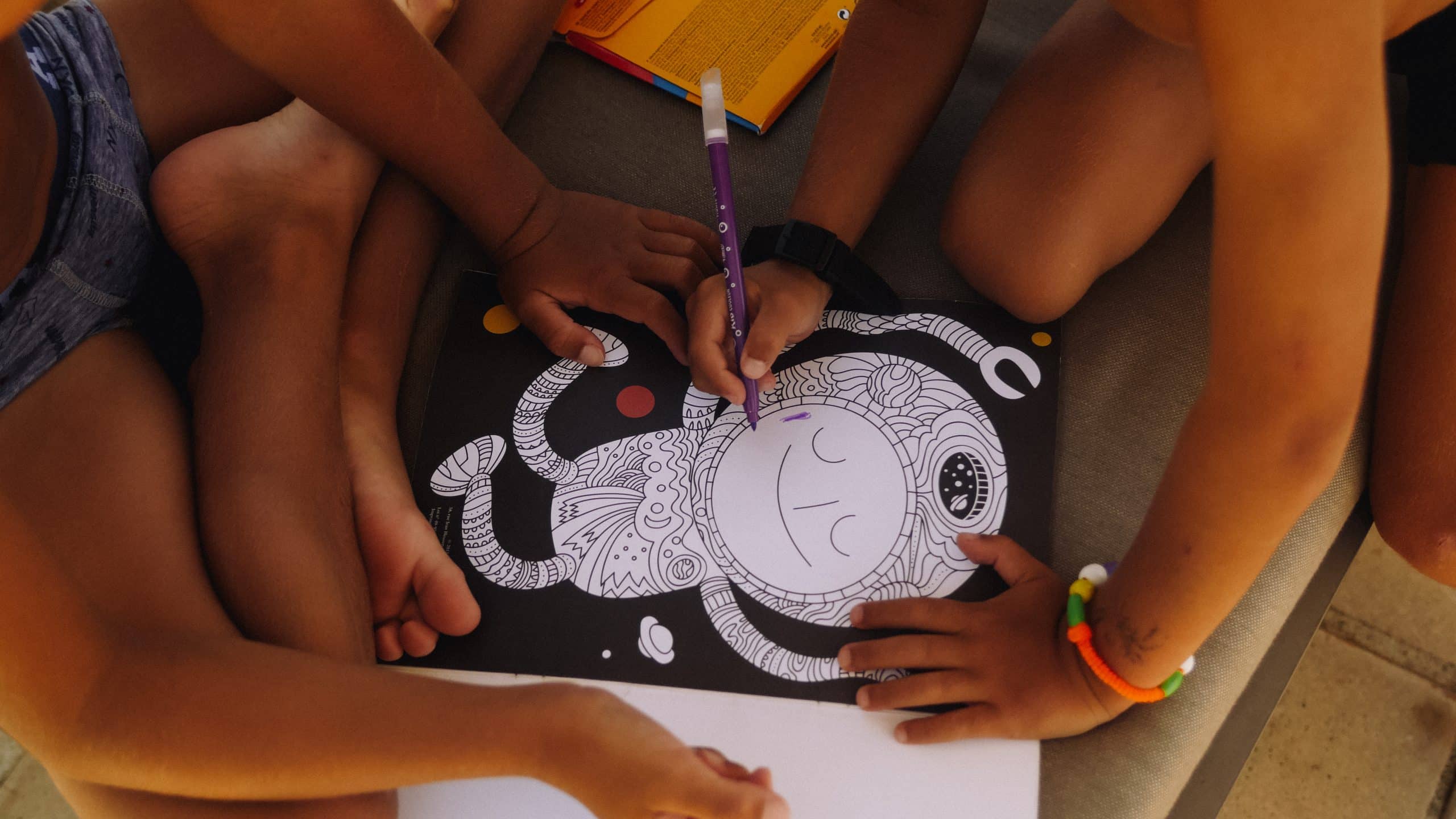Can Incorporating Mindful Coloring Reduce Anxiety Levels in Pre-Operative Patients?

As a patient stands on the precipice of a medical operation, anxiety can often be a lurking companion. The unknown, the fear of pain, and the anticipation of the recovery process are just a few factors that can trigger stress. In the face of such situations, patients often seek interventions that can help ease them through this overwhelming time. In recent years, we’ve seen mindfulness-based therapies gaining prominence in the health care sector, providing a holistic approach to care management. One such intervention that has caught our attention is mindful coloring. But can incorporating mindful coloring reduce anxiety levels in pre-operative patients? Let’s explore this question in the following sections.
An Overview of Anxiety in Pre-Operative Patients
Before we delve into the crux of the matter, it’s crucial to understand the issue at hand – anxiety in pre-operative patients. Anxiety can manifest in various ways, including constant worry, restlessness, and even physical symptoms like fast heartbeat or shakiness. It’s a natural response to a stressful event, and for a patient about to undergo an operation, it’s a common experience.
Have you seen this : How Does Early-Life Exposure to Urban Air Pollution Impact Adolescent Lung Development?
A study on Google Scholar revealed that a significant number of patients report high levels of anxiety before surgery. These feelings can stem from a fear of the unknown, concerns about the surgical outcome, or dread about the potential pain. Left unmanaged, this anxiety can negatively impact the patient’s health, undermining the success of the surgery and the recovery process.
Mindfulness-Based Interventions: A Potential Solution?
Given the prevalence of pre-operative anxiety, it’s no surprise that health care professionals have been exploring various interventions to alleviate this issue. One approach that has shown promise in several studies is mindfulness-based therapy.
In parallel : What Are the Potential Health Benefits of Cold Water Swimming for Immune Function?
Mindfulness, as the term suggests, involves maintaining a moment-by-moment awareness of our thoughts, feelings, bodily sensations, and surrounding environment. It implies acceptance, meaning that we pay attention to our thoughts and feelings without judging them — without believing, for instance, that there’s a “right” or “wrong” way to think or feel in a given moment.
A study indexed on Crossref showed that mindfulness-based interventions had a significant effect in reducing anxiety and stress in patients across multiple health care settings. But does this extend to the application of mindful coloring?
The Emergence of Mindful Coloring
Mindful coloring is a therapeutic intervention that combines the principles of mindfulness with the simple, engaging activity of coloring. It’s based on the concept that when we focus our attention on the simple action of coloring, it allows our mind to become absorbed in the moment, distracting from the worries and fears that fuel anxiety.
Mindful coloring is a relatively new intervention, yet it’s already showing promise in various health care settings. Several studies have reported that mindful coloring can help reduce anxiety and increase mindfulness – a state of active, open attention to the present.
Examining the Impact of Mindful Coloring on Pre-Operative Anxiety
Several studies have explored the potential impact of mindful coloring on pre-operative anxiety. In these studies, participants were given coloring books and encouraged to color mindfully – focusing on the act of coloring, the feeling of the pencil in their hand, the colors they were using, and the designs they were creating.
The results from these studies were compelling. Patients reported lower levels of anxiety after mindful coloring sessions. They also reported feeling more relaxed and better equipped to manage their stress during the pre-operative period.
The findings were echoed in a recent study conducted by a health care group that used mindful coloring as an intervention for pre-operative patients. The study used a variety of measures to assess anxiety levels, including self-reported anxiety levels and physiological measures such as heart rate and blood pressure.
The Future of Mindful Coloring in Pre-operative Care
Given the evidence, it does appear that mindful coloring holds potential as an effective intervention for pre-operative anxiety. However, more extensive research and larger-scale studies are required to fully understand the breadth and depth of its impact.
The beauty of mindful coloring lies in its simplicity. It requires no special tools or training, and patients can engage in it at their own pace and comfort. As more health care providers recognize the impact of mental health on physical wellbeing, interventions like mindful coloring will likely become a common feature in pre-operative care.
Mindful coloring is not just about alleviating anxiety; it’s a therapeutic process that can help patients connect with themselves, their experiences, and their feelings. It’s a shift from the conventional medical model that views the patient as a passive recipient of care, to one that empowers the patient to take an active role in their health and wellbeing.
In a world where surgery can often feel dehumanizing and clinical, mindful coloring provides a touch of humanity – a reminder that amid the high-tech medical procedures, the patient’s emotional and mental wellbeing must not be overlooked. Perhaps it’s time to introduce a new color to the palette of pre-operative care – the color of mindfulness.
Mindful Coloring versus Traditional Methods: A Comparative Analysis
The use of traditional methods to manage pre-operative anxiety has been well-documented. From pharmacological interventions, such as administering anti-anxiety medication, to psychological methods like counselling and cognitive behavioral therapy, various approaches have been explored. However, the integration of mindfulness-based therapies, particularly mindful coloring, into this landscape is quite a recent development.
In a systematic review of studies published on Google Scholar, mindful coloring was compared to traditional methods for managing pre-operative anxiety. The results of this comparative analysis were quite interesting. It was reported that mindful coloring, despite its simplicity, was nearly as effective as more complex and resource-intensive interventions.
One randomized controlled trial compared the effect of mindful coloring to virtual reality immersion, a cutting-edge method used in pain management and anxiety reduction. Despite the sophistication and interactive nature of virtual reality, the study found that both interventions were equally effective in reducing pre-operative anxiety. Moreover, mindful coloring had the added advantage of being more accessible and less expensive than virtual reality.
The gentle, non-invasive nature of mindful coloring makes it a suitable option for a wide range of patients undergoing surgery, including those who might be resistant to other forms of intervention. Furthermore, the ease of implementing mindful coloring allows it to be seamlessly integrated into pre-operative care, without disrupting existing protocols.
Conclusion: Time to Color the Future
Based on the current body of research, it is clear that mindful coloring holds significant promise as an effective method to reduce pre-operative anxiety. By incorporating this simple, yet powerful mindfulness-based intervention into pre-operative care, healthcare professionals can offer patients a unique tool to manage their stress and anxiety, enhancing their overall surgical experience.
However, this should not be viewed as a replacement for traditional methods but rather a complementary method that can be used alongside them. A multi-faceted approach to pre-operative anxiety management that embraces both traditional and innovative methods would cater to a wider range of patient needs and preferences. In other words, there is no "one size fits all" approach.
In conclusion, mindful coloring is much more than a simple distraction technique. As the current research shows, it’s a tool that helps connect the patient to the present moment, reducing their anxiety levels and promoting a state of mindfulness. This shift towards patient-centered care that acknowledges mental health as integral to overall health is a positive step in modern healthcare.
While more extensive research is needed, the preliminary findings indicate that mindful coloring could indeed be the new color in the palette of pre-operative care. It’s time we embraced this approach and colored the future of healthcare with the hues of mindfulness.
